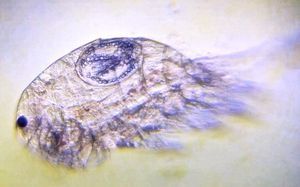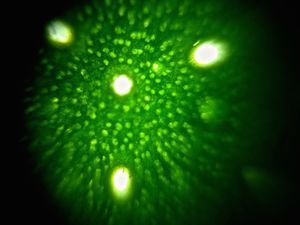Foldscope Day 3: Ants, Pollen, and Berries up close
 Dec 28, 2015 • 3:17 AM UTC
Dec 28, 2015 • 3:17 AM UTC Unknown Location
Unknown Location 140x Magnification
140x Magnification Microorganisms
Microorganisms
aatish
Learn about the author...
6posts
3comments
1locations
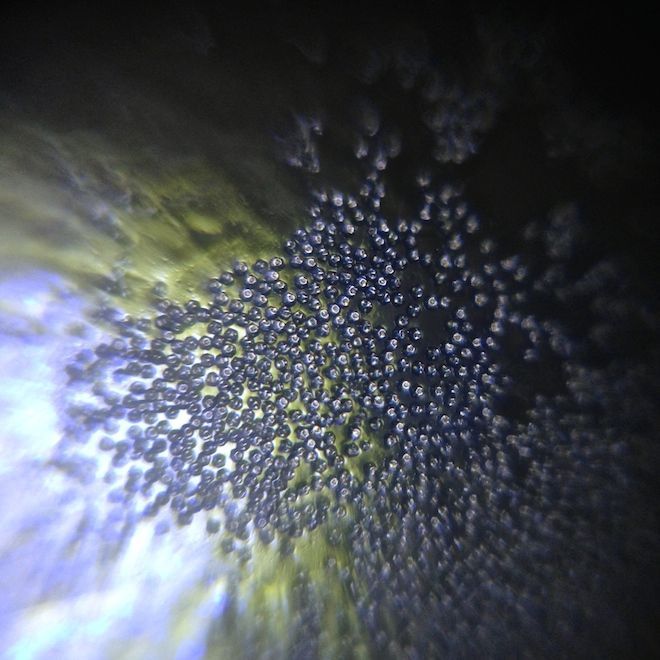
Ants I stuck an ant under the foldscope. The ant and the foldscope did not disappoint. What looks to the eye approximately like this…
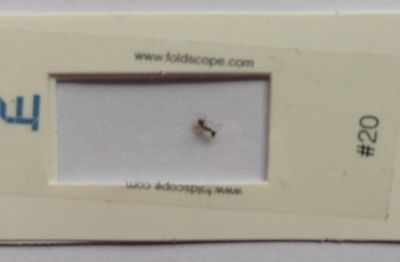
…under the foldscope, is transformed into this.
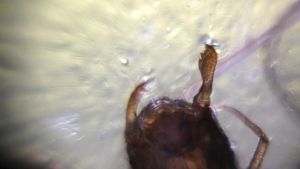
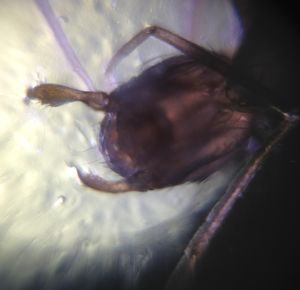
So of course, I had to take a video and explore this ant further. Here’s what I saw. Amazingly, the ant is actually translucent, you can see right inside it!! I wasn’t expecting that. There’s so much to see here… post a comment with something interesting you notice.
Pollen We have a vase of these flowers at home in Delhi. (Actually, I think they’re meant to be filler for the massive pink flowers behind them.)

Here’s what an individual flower looks like. It’s quite small, about a centimeter across. If you know what flower this is, please post a comment and I’ll update the post.
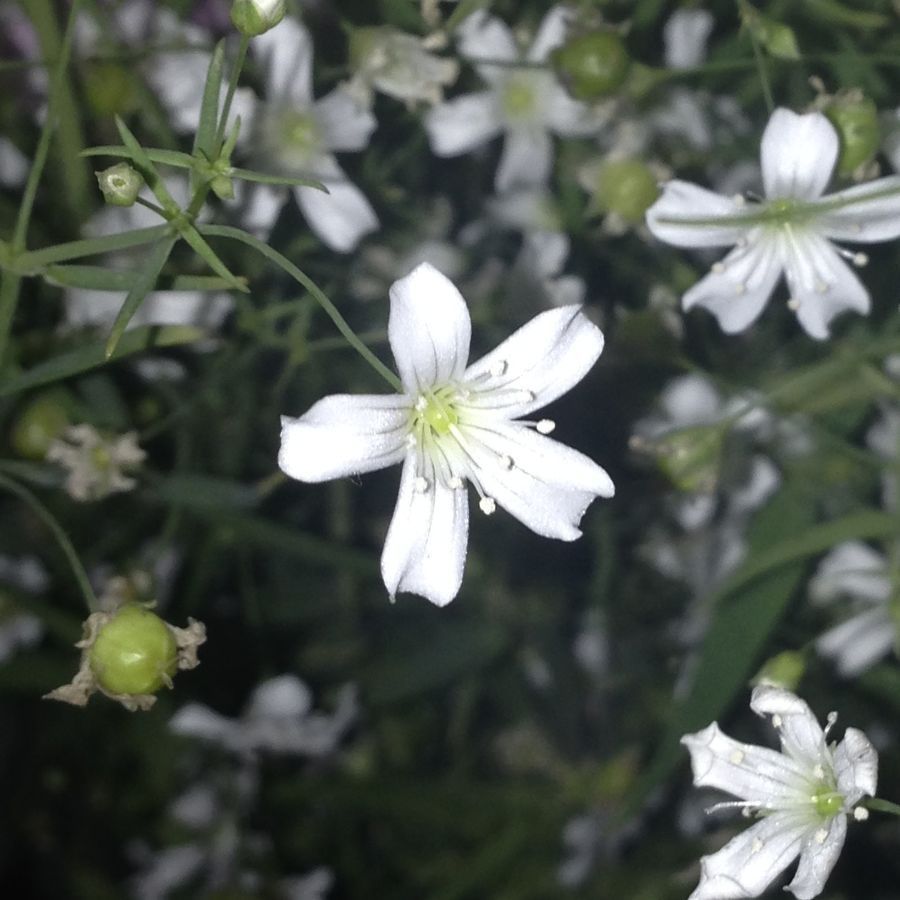
So I took a flower, placed it on a slide and put it under the foldscope (at 140X magnification). Here’s what I saw.
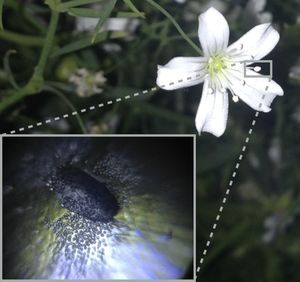
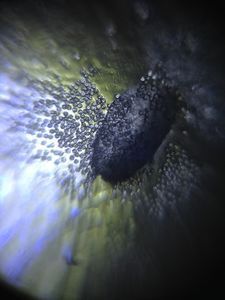
You’re looking at the anther, the part of the flower that makes pollen and is coated with the stuff. Around it are individual grains of pollen. To give you a sense of scale, I estimate the anther in the image above is between 0.3-0.5 mm long. Based on this, I estimate each pollen grain to be about 15 microns in diameter.
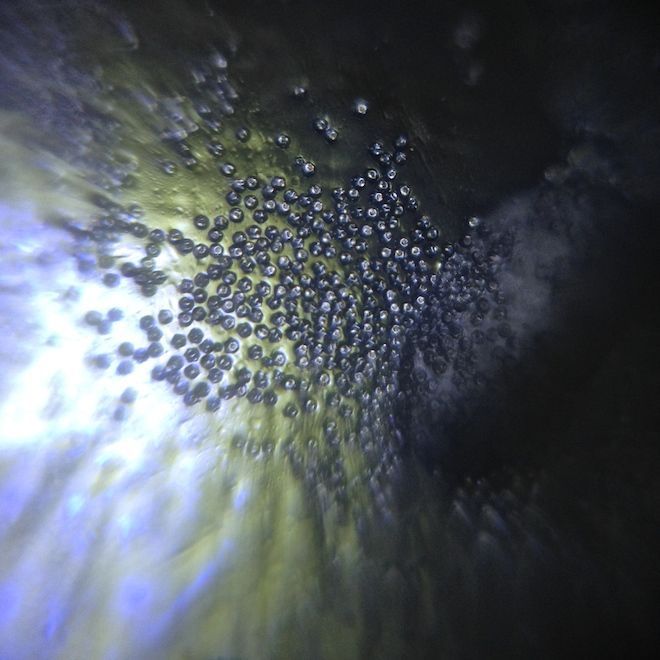
I spent some time staring at these pollen grains. I’m really impressed with how clearly we can see them under the foldscope. It’s kind of mesmerizing to look at…. I’m so curious about their shape.

I also tried using the high magnification lens (480X) to take a closer look.
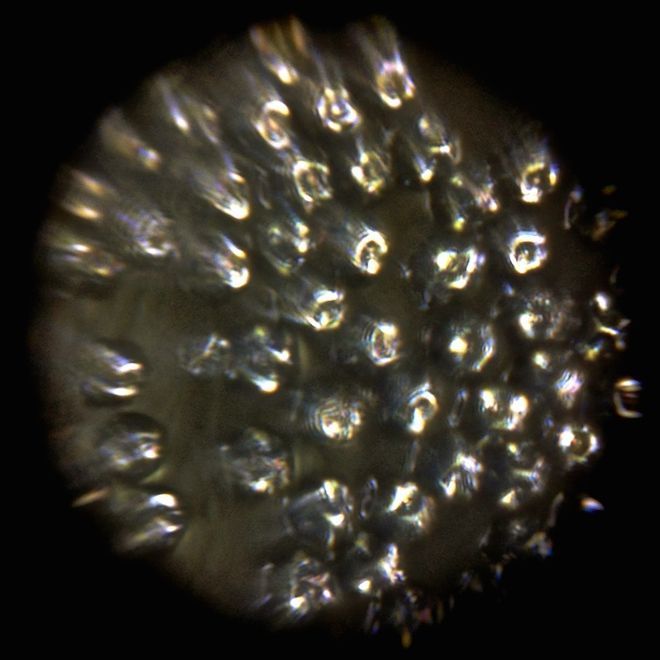
You can see diffraction rings forming around each pollen grain. That’s interesting.. does this mean 15 microns is running up against the diffraction limit of this system? I wonder if you could use this image of the fringes to calculate something interesting…
Winterberry Next up, a friend gifted my parents a bunch of these red berries for the holidays.
Winterberry Next up, a friend gifted my parents a bunch of these red berries for the holidays.
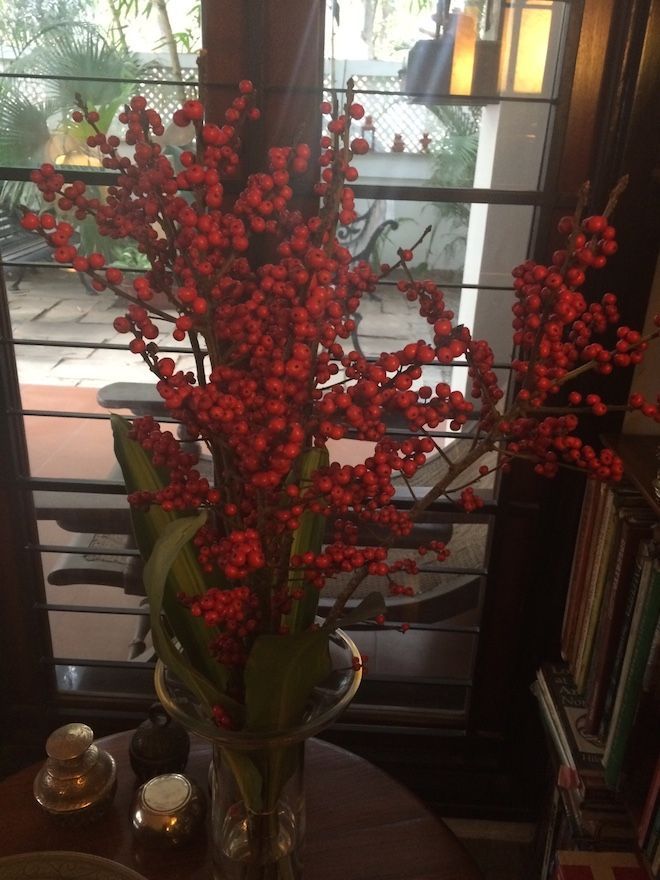
The berries are a kind of holly known as winterberry ( Ilex verticillata ), native to North America. As you can see, they’re incredibly bright red. I was curious to look at the pigment under the microscope, so I peeled the skin and cut off a small piece of the peel to put under the foldscope.

I think those are probably individual cells I’m seeing. I wondered about what gives this berry peel its bright red color… are its cells dyed with some kind of pigment?
While panning around, I found a single sheet of cells exposed at the edge of the peel.
While panning around, I found a single sheet of cells exposed at the edge of the peel.

So I zoomed in to check it out…

I swapped in the high magnification lens to take a closer look.
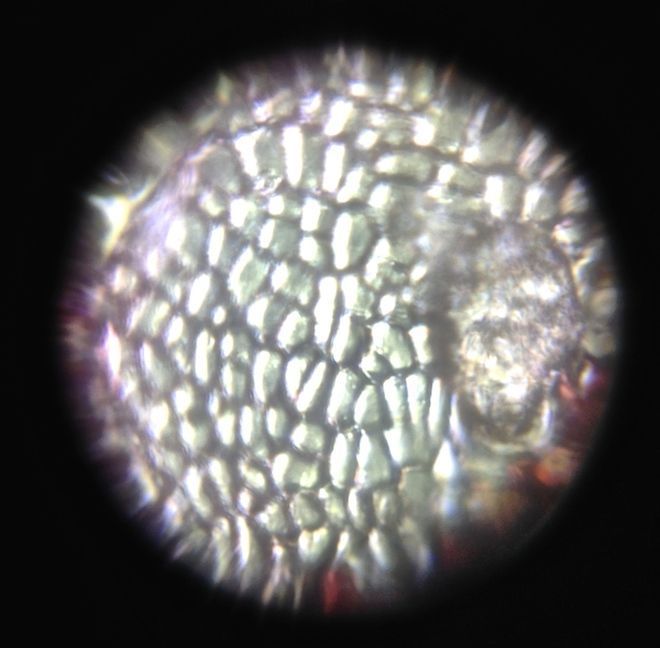
It kind of blows my mind that I can just peer into a creature’s cells. I remember wanting to do this when I was 8 or 9 years old (actually back then I was convinced I could see cells with my eyes, but that’s another story).
One more thing… I’ve been trying with limited success to image a drop of water. I made a video of my first attempt at seeking the creatures lurking in a drop of water. And Manu gave me some tips on imaging life in water. More on this in a post coming shortly.
One more thing… I’ve been trying with limited success to image a drop of water. I made a video of my first attempt at seeking the creatures lurking in a drop of water. And Manu gave me some tips on imaging life in water. More on this in a post coming shortly.
Sign in to commentNobody has commented yet... Share your thoughts with the author and start the discussion!
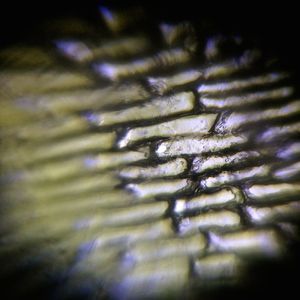
 0 Applause
0 Applause 0 Comments
0 Comments